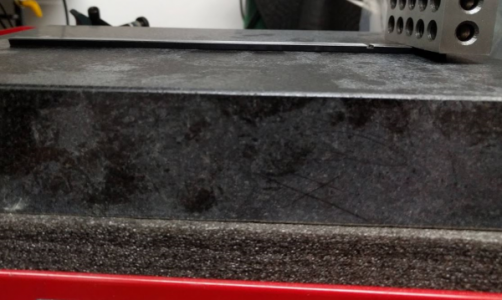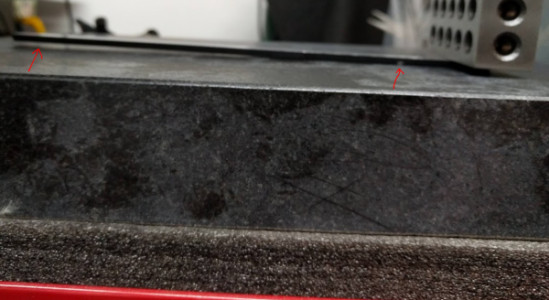This is driving me insane. If I run the cross slide all the way out (towards the operator) it gets tighter and tighter to turn. I've tried adjusting the gib screws but even with them all the way out there's a lot more friction as I move the compound towards the beginning. So tonight I decided to remove the gib strip to take a closer look.
There are two sides to the gib strip, the polished side and the non polished side (this side has a notch for one of the gib screws to catch). With the polished side down on the surface plate, there's no bow in the strip but when I flip it over there's a bow. Also the thickness on one end of the gib strip is about 15 thou less than the other end. If I try to take the bow out by bending the gib, it shows up on the other side. So I'm guessing the bow is because the grinding on the non-polished side is uneven and ultimately this bow is what's causing my issue with more friction as the compound travels outward. Any thoughts, suggestions?


There are two sides to the gib strip, the polished side and the non polished side (this side has a notch for one of the gib screws to catch). With the polished side down on the surface plate, there's no bow in the strip but when I flip it over there's a bow. Also the thickness on one end of the gib strip is about 15 thou less than the other end. If I try to take the bow out by bending the gib, it shows up on the other side. So I'm guessing the bow is because the grinding on the non-polished side is uneven and ultimately this bow is what's causing my issue with more friction as the compound travels outward. Any thoughts, suggestions?



